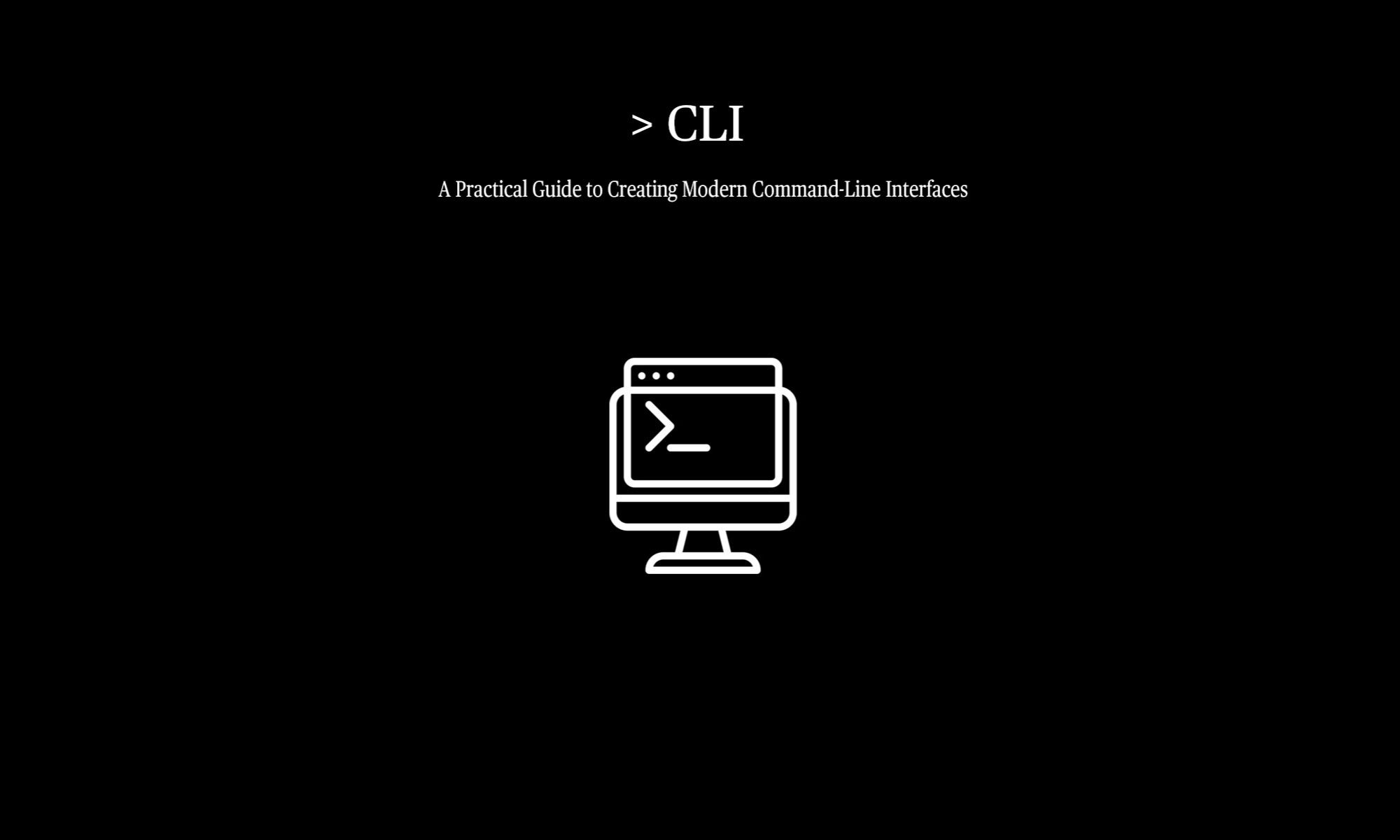Command-line interfaces—and their companion technologies like shells and terminals—have a rich lineage tracing back to the 1960s. Once the default interface to computing, they nearly faded into obscurity with the rise of graphical user interfaces. But Linus Torvalds’ introduction of Linux in the early 1990s re-invigorated the need for CLIs, and his creation of Git later demonstrated how command-line tools could be designed for modern workflows at scale.
Now, in 2025, CLIs are not just surviving—they’re thriving. In the era of AI-assisted development, tools like Claude Code have brought the command line back to center stage, showing that powerful interfaces don’t need windows—they just need thoughtful design.
The timeline below highlights key moments that shaped CLI evolution, aligned with the topics covered in CLI: A Practical Guide to Creating Modern Command-Line Interfaces. Use it as a launchpad to explore this book, dive into related publications, browse online resources, and consider how this history influences the training of modern large language models.
RUNCOM & Early Shell Concepts
Louis Pouzin developed RUNCOM, an early script processor for the Compatible Time-Sharing System (CTSS). This work laid the foundation for command-line scripting. Pouzin later published key design papers for the Multics shell—realized by Glenda Schroeder—introducing concepts that shaped future shells like UNIX’s.
V6 Shell
Ken Thompson developed the first UNIX shell at Bell Labs for Version 6 UNIX (V6). It introduced interactive command execution and simple scripting, laying the groundwork for future shell innovations.
C Language Enables CLI Growth
Dennis Ritchie created the C programming language at Bell Labs. As UNIX was rewritten in C, so were many of its early command-line tools and shells, making UNIX—and the CLI—more portable, composable, and easier to extend.
Shell Evolution
TThe Bourne shell (sh) replaced the original V6 shell, introducing structured scripting and control flow. Over the next decade, new shells emerged, including the KornShell (ksh) in 1983, Almquist Shell (ash), and the Bourne Again Shell (Bash) in 1989—each extending features, portability, and performance.
The Decline
Graphical user interfaces, popularized by Apple and Microsoft, led to a decline in command-line usage and innovation. However, the release of Linux in 1991 gave Unix-era shells and CLI tools a new platform—preserving and reigniting interest in terminal-based computing.
Git Introduced
In response to the Linux kernel’s need for a new version control system, Linus Torvalds created Git. It introduced the command-object model, integrated help as a first-class feature, and a high-performance distributed architecture that redefined how developers interacted with source code at the command line.
PC Terminals & Shells
Apple introduced Terminal in 2001, providing shell access to Darwin, its Unix-based OS core. In 2006, Microsoft launched PowerShell, blending traditional shell concepts with .NET objects to create a new paradigm for Windows command-line automation.
Go Programming Language Released
Created at Google by Robert Griesemer, Rob Pike, and Ken Thompson, Go emphasized simplicity, fast compilation, and native concurrency—making it ideal for cross-platform CLI development.
Rise of DevOps & the CLI Renaissance
As DevOps practices spread, CLI tools regained prominence in cloud provisioning and automation. New tools emerged:
2013: Docker CLI revolutionized software containerization.
2009: WP-CLI launched for WordPress automation.
2010: Heroku CLI enabled streamlined PaaS deployment.
CLI Tools Become DevTool Standards
Command-line tools became critical in cloud-native environments:
2016: GitHub CLI (gh) begins internal development.
2014: Terraform CLI for infrastructure-as-code.
2014: AWS CLI v2 began gaining momentum.
2015: Kubernetes CLI (kubectl) became a DevOps staple.
Rust Enables a New Wave of Modern CLIs
In the years following Rust’s stable release, a new generation of fast, user-friendly CLI tools emerged:
2021 – starship gains popularity as a customizable, cross-shell prompt built in Rust.
2016 – ripgrep launches, offering blazing-fast recursive search with intuitive defaults and grep-like behavior.
2017 – fd is released as a simple, fast alternative to find, with better defaults and syntax.
2018 – bat introduces syntax-highlighted file viewing, improving upon cat.
2019 – exa reimagines the ls command with color, metadata, and Git awareness.
2020 – zoxide brings smarter directory jumping as a drop-in replacement for cd.
Bash on Windows Announced
At Build 2016, Microsoft introduced native Bash on Windows via WSL (Windows Subsystem for Linux), making the Linux CLI ecosystem first-class on Windows machines.
CLI Ecosystem Expansion
2017: Speedtest CLI released for network diagnostics.
2018: Azure CLI matures for cloud administration.
2019: GitHub CLI (gh) enters public beta.
2020: GitHub CLI 1.0 launches, integrating GitHub workflows directly into the terminal.
Warp Terminal Announced
Warp reimagined the terminal experience with features like block-based input, team collaboration, and AI-assisted workflows—while remaining shell-agnostic.
AI Meets the CLI
2022: Claude CLI enters private testing—an AI-native CLI for code assistance.
2023: Cursor IDE gains adoption with CLI-inspired rules and GPT-4.
2024: GitHub Copilot CLI mode and Amazon CodeWhisperer CLI integrations emerge.
>CLI Published
Written to document the legacy of the command-line interface and inspire enthusiasm for its future, this independently published book is, by far, the least significant milestone on this timeline. Its highest hope is simple: that one day, a contributor to a mainstream CLI might have this book on their shelf.
